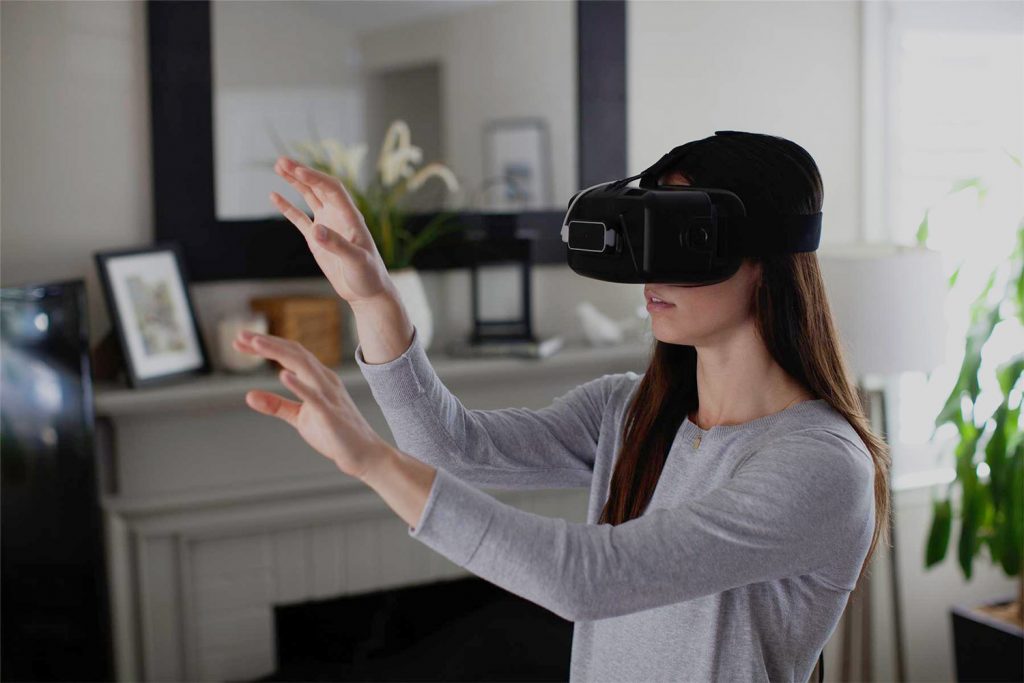 “In my opinion no technology has promised more, delivered less, and destroyed more wealth than virtual reality.”
“In my opinion no technology has promised more, delivered less, and destroyed more wealth than virtual reality.”
That’s the sentiment of Stephen Masiclat, director of New Media Management at The S.I. Newhouse School of Public Communications in Syracuse.
“Masiclat has spent much of his career researching emerging technology and its impact on the media business,” explains Ellen Harvey in Publishing Executive. “He argues that despite the excitement around VR, there are huge barriers to widespread platform adoption and an unlikely path to profitability for publishers.”
The real opportunities for publishers, Masiclat claims, lie not in VR, but in augmented reality (AR). – in spite of claims by tech-culture forces like Mark Zuckerberg, who has been buying up VR companies and making the case for VR to become a “pervasive part of consumers’ lives,” Harvey notes.
Virtual vs. Augmented Reality – What’s the Difference?
For many, the terms VR and AR are used, if not interchangeably, at least with somewhat blurred lines. Let’s clarify what we’re talking about.
“Virtual reality is all about the creation of a virtual world that users can interact with,” explains Vamien McKallin writing in TechTimes. “This virtual world should be designed in such a way that users would find it difficult to tell the difference from what is real and what is not.” (Think Google Cardboard or those Samsung VR commercials we all saw at the holidays).
Augmented reality, on the other hand, blends AR with real life. “With AR, users are able to interact with virtual contents in the real world, and are able to distinguish between the two,” he explains.
“Both virtual reality and augmented reality are similar in the goal of immersing the user, though both systems to this in different ways. With AR, users continue to be in touch with the real world while interacting with virtual objects around them. With VR, the user is isolated from the real world while immersed in a world that is completely fabricated,” McKallin continues.
Why VR Won’t Fly for Publishers
Accordingly to Masiclat, virtual reality will not be taking the publishing world by storm, for two very specific reasons.
“First, the processing power and storage requirements needed to create a truly virtual experience, where consumers can interact with a virtual environment, are immense,” explains Harvey, excerpting Masiclat’s presentation to the 2016 FUSE Media summit. “Publishers would need to invest significant resources to create this type of media experience, an investment that will be out of reach for many in the industry.”
“Second, Masiclat thinks not enough consumers will adopt VR technology to make publishers’ investments worthwhile,” Harvey continues. His predictions are based on technology adoption models that show that new tech must meet three benchmarks to become widely adopted. It must be:
- convenient to use;
- emotionally engaging; and
- used frequently.
Gamers aside, the general population might find it emotionally engaging, but it’s far from convenient, with many users complaining of nausea, headaches and disorientation. This is likely to prevent frequent use.
The Future of AR and Publishing
Enter augmented reality, which Masiclat believes will have a much larger impact on published content.
“I think you can draw a straight line between the information that publishers create and making it useful in some kind of real-world context,” says Masiclat.
It’s already happening in publishing. Ikea hit AR out of the park with their 2013 catalog. Other brands like Mercedes scored big that year, and Elle broke some AR ground with their November 2016 issue. There’s work being done by Condé Nast on the intersection of print and AR with Vivepaper, and other companies creating custom content delivery on the fly.
“One basic example Masiclat gives is an AR app envisioned by technology company Magic Leap. Using this app, a user can look at the sky through her camera phone lens, and a weather report will overlay on top of that camera view, sharing the temperature and weather patterns for the day,” Harvey explains.
All of this, of course, relies on successfully managing the huge amount of user data available to publishers, and understanding it in ways that can provide useful and relevant content to each specific end user – what they need, when they need it. And this is where publishers can excel.
Rather than creating an entirely new world for their readers (via VR), publishers have an incredible opportunity to create content that can be digitally offered as a welcome layer in their reader’s real world experience.

April 27, 2017, 9:08 am